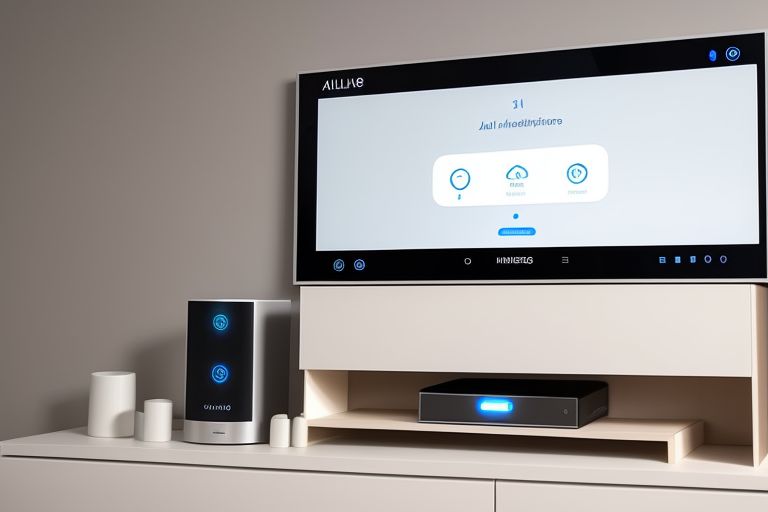Imagine a home that anticipates your needs before you even realize them. From adjusting the thermostat to your preferred temperature to brewing your morning coffee as soon as your alarm goes off, AI-driven home automation is transforming the way we live. This cutting-edge technology is no longer a futuristic concept—it’s a reality that’s making homes smarter, safer, and more efficient. In fact, research shows that the global smart home market is projected to reach $207 billion by 2027, driven by advancements in artificial intelligence and IoT (Internet of Things) devices. But what exactly is AI-driven home automation, and how can it benefit your daily life? Let’s dive in.
What is AI-Driven Home Automation?
AI-driven home automation refers to the integration of artificial intelligence into smart home systems to create a seamless and intuitive living experience. Unlike traditional home automation, which relies on pre-programmed commands, AI-powered systems learn from your habits, preferences, and behaviors to make intelligent decisions. These systems use machine learning algorithms, natural language processing, and real-time data analysis to adapt to your lifestyle, offering a level of personalization that was once unimaginable.
How Does It Work?
At the core of AI-driven home automation are interconnected devices such as smart thermostats, lighting systems, security cameras, and voice assistants. These devices collect data through sensors, cameras, and user inputs, which is then processed by AI algorithms to automate tasks. For example, your smart thermostat might learn your daily routine and adjust the temperature accordingly, while your security system can detect unusual activity and send alerts to your smartphone.
Key Benefits of AI-Driven Home Automation
Implementing AI-driven home automation offers numerous advantages that go beyond convenience. Here are some of the most compelling benefits:
1. Enhanced Energy Efficiency
AI-powered systems optimize energy usage by analyzing patterns and making adjustments in real time. For instance, a smart thermostat can reduce heating or cooling when it detects that no one is home, saving you money on utility bills. Studies show that homeowners can save up to 15% on energy costs by using AI-driven automation.
2. Improved Home Security
AI enhances home security by providing advanced monitoring and detection capabilities. Smart cameras equipped with facial recognition can distinguish between family members, guests, and intruders, while AI algorithms can identify unusual behavior and trigger alerts. This proactive approach ensures that your home is always protected.
3. Personalized Comfort
One of the standout features of AI-driven automation is its ability to personalize your living environment. From adjusting lighting based on your mood to playing your favorite music when you walk in the door, these systems create a tailored experience that caters to your unique preferences.
4. Time-Saving Convenience
By automating routine tasks such as turning off lights, locking doors, or even ordering groceries, AI-driven systems free up your time so you can focus on what matters most. Voice assistants like Amazon Alexa or Google Assistant make it easy to control your home with simple voice commands.
Real-World Applications of AI-Driven Home Automation
AI-driven home automation is being used in a variety of ways to enhance everyday life. Here are some practical examples:
- Smart Lighting: AI-controlled lighting systems adjust brightness and color based on the time of day, your activities, or even your mood.
- Intelligent Appliances: Refrigerators with AI can track food expiration dates and suggest recipes based on available ingredients.
- Health Monitoring: Smart home devices can monitor air quality, humidity, and even your sleep patterns to promote a healthier lifestyle.
- Voice-Activated Assistants: Voice-enabled devices allow you to control multiple home functions hands-free, making multitasking easier than ever.
How to Get Started with AI-Driven Home Automation
If you’re ready to transform your home with AI-driven automation, here’s a step-by-step guide to help you get started:
- Assess Your Needs: Identify the areas of your home where automation can make the most impact, such as lighting, security, or energy management.
- Choose Compatible Devices: Select devices that are compatible with popular AI platforms like Google Home or Amazon Alexa for seamless integration.
- Set Up a Central Hub: Use a smart hub to connect and control all your devices from a single interface.
- Configure AI Settings: Customize your AI settings to align with your preferences and routines for optimal performance.
- Monitor and Adjust: Regularly review your system’s performance and make adjustments as needed to ensure it continues to meet your needs.
The Future of AI-Driven Home Automation
The future of AI-driven home automation is incredibly promising, with advancements in technology paving the way for even smarter homes. Experts predict that AI will soon enable homes to predict and respond to emergencies, such as detecting water leaks or fire hazards before they escalate. Additionally, the integration of AI with renewable energy systems could lead to even greater energy savings and sustainability.
Conclusion
AI-driven home automation is revolutionizing the way we interact with our living spaces, offering unparalleled convenience, security, and efficiency. By leveraging the power of artificial intelligence, you can create a home that not only meets your needs but also adapts to your lifestyle. Whether you’re looking to save energy, enhance security, or simply make life a little easier, AI-driven automation is a game-changer. As technology continues to evolve, the possibilities for smarter, more intuitive homes are endless. So, why wait? Start your journey toward a smarter home today and experience the future of living.












Leave a Reply